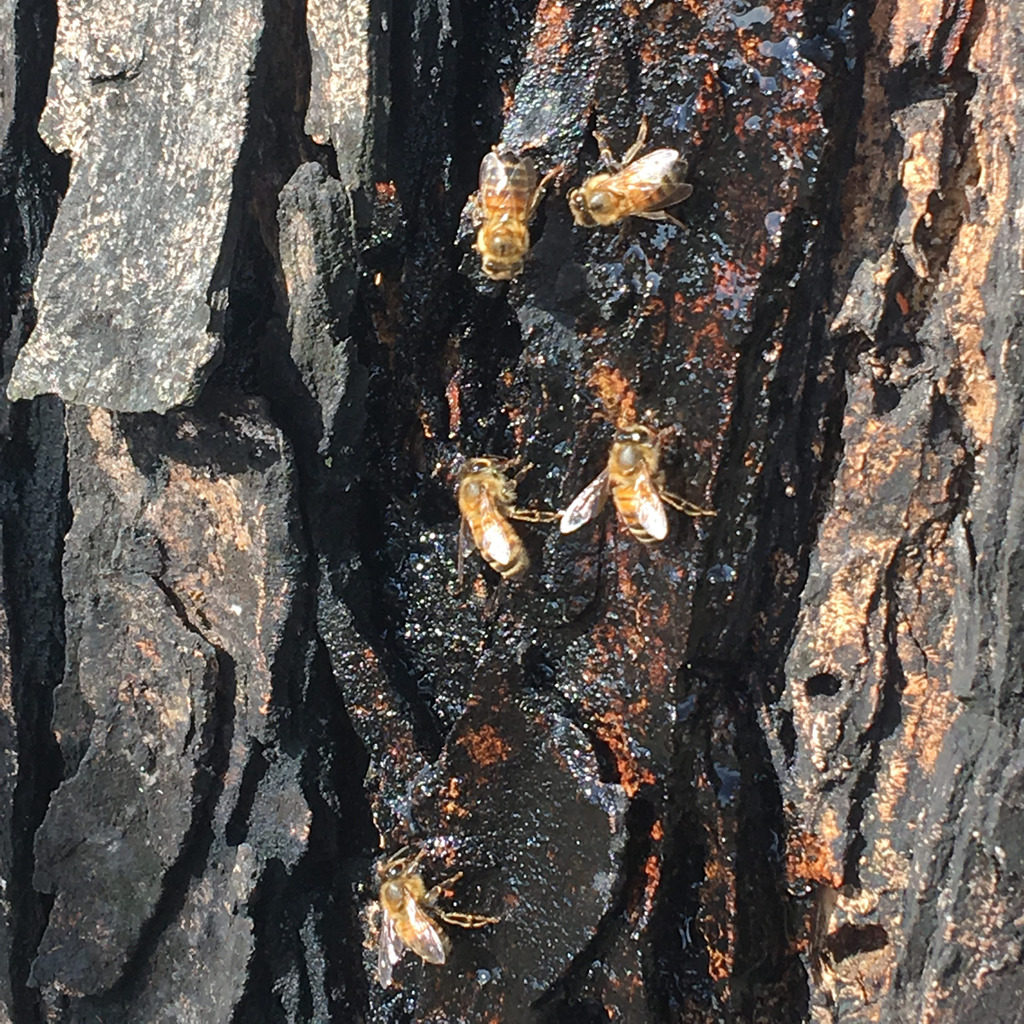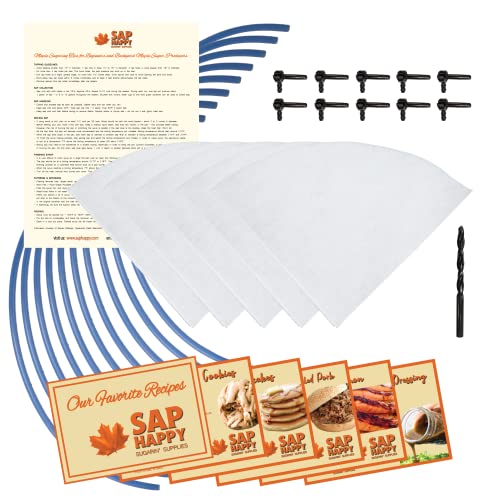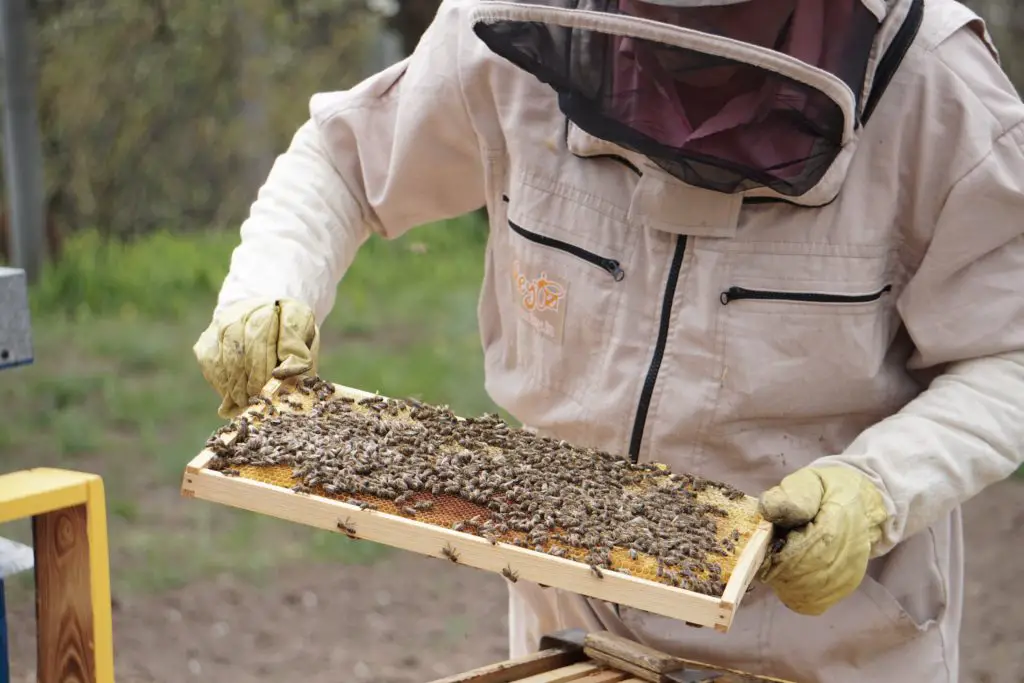Affiliate Disclaimer - As an Amazon Associate I earn from qualifying purchases.
It supports the website. So, Thank you
We all want the best for our bees and at times when nectar is scarce, it is not uncommon for beekeepers to offer alternatives like sugar water and white sugar. However, anything that is sweet is largely considered to be suitable for bees but this isn’t always the case. If you have some maple sap that you’d like to feed to your bees, it’s worth asking the question, can bees use maple sap?
Maple sap probably wouldn’t do much harm to your bees but it isn’t very nutritionally beneficial. You see, maple sap only contains between 1-2% sugar which is far too low to be of any benefit to your bees.
There are better alternatives to maple sap if you’re looking to feed your bees. However, if you’re about to tap some maple trees and are worried about the bees, then there’s really no need to be; the product won’t hurt them in any way.
Table of Contents
What Is Maple Sap?
Maple sap is the sap produced by the maple tree. It is released during the process of ‘tapping’ the tree and is a clear liquid with a consistency not all that dissimilar to water.
Is Maple Sap The Same As Maple Syrup?
Many people confuse maple sap with the commonly used sweetener, maple syrup. These are not the same thing although maple syrup is derived from maple sap. The syrup is produced by boiling the sap to remove the water content from the sap which results in it becoming concentrated and turning into what we know as maple syrup.
There is a process that the sap has to go through in order for it to change enough to be classed as maple syrup. It’s only truly considered syrup once the sugar level reaches 66%. This can also be read as 219 degrees using a candy thermometer.

Maple Tapping Kits:
Can Bees Have Maple Sap?
For a lot of beekeepers, tapping local maple trees is another favorite pastime. But what many people become concerned about is whether the sap will be attractive to the bees and potentially harm them.
The great thing about maple sap is that it doesn’t have very high sugar content. At most, it would be around 5% sugar but more commonly, the sugar content wouldn’t exceed 1-2%. This means that it probably won’t be hugely attractive to bees.
Bees enjoy very sweet foods and usually won’t bother with anything that has a sugar content lower than around 30%. While you might notice bees showing a vague interest in tapped maple trees, it won’t take long before they move on to find another sugar source.
That said, there are some beekeepers that warn against the dangers of using maple sap mainly because of the number of solids that could cause dysentery in bees. Moreover, there are high levels of things like calcium and potassium in maple sap which may be harmful to your bees.
But since bees won’t usually go for maple sap in large quantities, these are minor concerns. If you really wanted to use maple sap for bees, we would suggest using it as a base for sugar water when nectar sources are low.
Can Bees Have Maple Syrup?
There are minerals and solids in maple syrup that might not be suitable for your bees. Therefore, it is not recommended to offer it to a confined hive. The only time that experts recommend using maple syrup for bees is during the later part of spring when the bees are able to fly and void.
What Is Bee Dysentery?
You may have heard of dysentery in humans which is an illness that is caused by bacteria. For the most part, this is linked with being exposed to unsanitary conditions so new beekeepers often associate this with bee dysentery and blame uncleanliness for the condition.
However, this is not the case. Where bee dysentery is concerned, it is not a bacterial infection but rather has to do with too much fecal matter in the gut of the bee.
You will find that dysentery in bees becomes more of a problem during the winter months since the bees are unable to fly outside of the hive. This means that their waste builds up inside their gut and the bee must empty itself inside the hive.
There may be times that bees exit the hive quickly to do this but even so, it’s usually the case that the bee will poop right outside the hive. If you notice this then it’s time to act.
Once a bee colony is infected with dysentery, this can be unpleasant for everyone involved, including the beekeeper. While there are no bacteria involved, all that bee waste inside the hive is what causes the problem and even though the bees will make an attempt to clean up, this is usually in vain as they’ll just end up transferring any pathogens to other parts of the hive and to other bees.
You may also notice that the hive begins to smell. While this is not pleasant, the main concern here is that the pheromones bees use to communicate may not be picked up on, so communication within the hive is affected.

What Causes Bee Dysentery?
As we have learned, dysentery in bees is caused because of a build-up of waste in the gut. But how does this happen in the first place?
Well, it’s quite simple; the wrong types of food. Imagine as humans, we are told that eating lots of fiber will keep us regular. For bees, eating too many solids, especially over winter, can cause problems in the digestive system resulting in a build-up of waste.
When we talk about solids for the bee, we are referring to ash. This is what is left behind after a food has been burned and is made up of compounds such as sodium, calcium, and potassium. The honey that your bees have stored up as a food source for winter may have varying levels of ash depending on the nectar that was used to produce it.
Conclusion
We have to be very mindful about what we allow our bees to eat. Some food sources may appear to be harmless but might not do the bees any good in the long run.
Maple sap isn’t likely to do much harm to bees, mostly because it doesn’t have a high enough sugar level that bees would even bother to eat a lot of it. That said, it does contain things like calcium and potassium which could be linked to bee dysentery.
If you’re tapping maple trees, there’s no need to be too concerned but we wouldn’t recommend feeding sap to your bees as an alternative to nectar.














